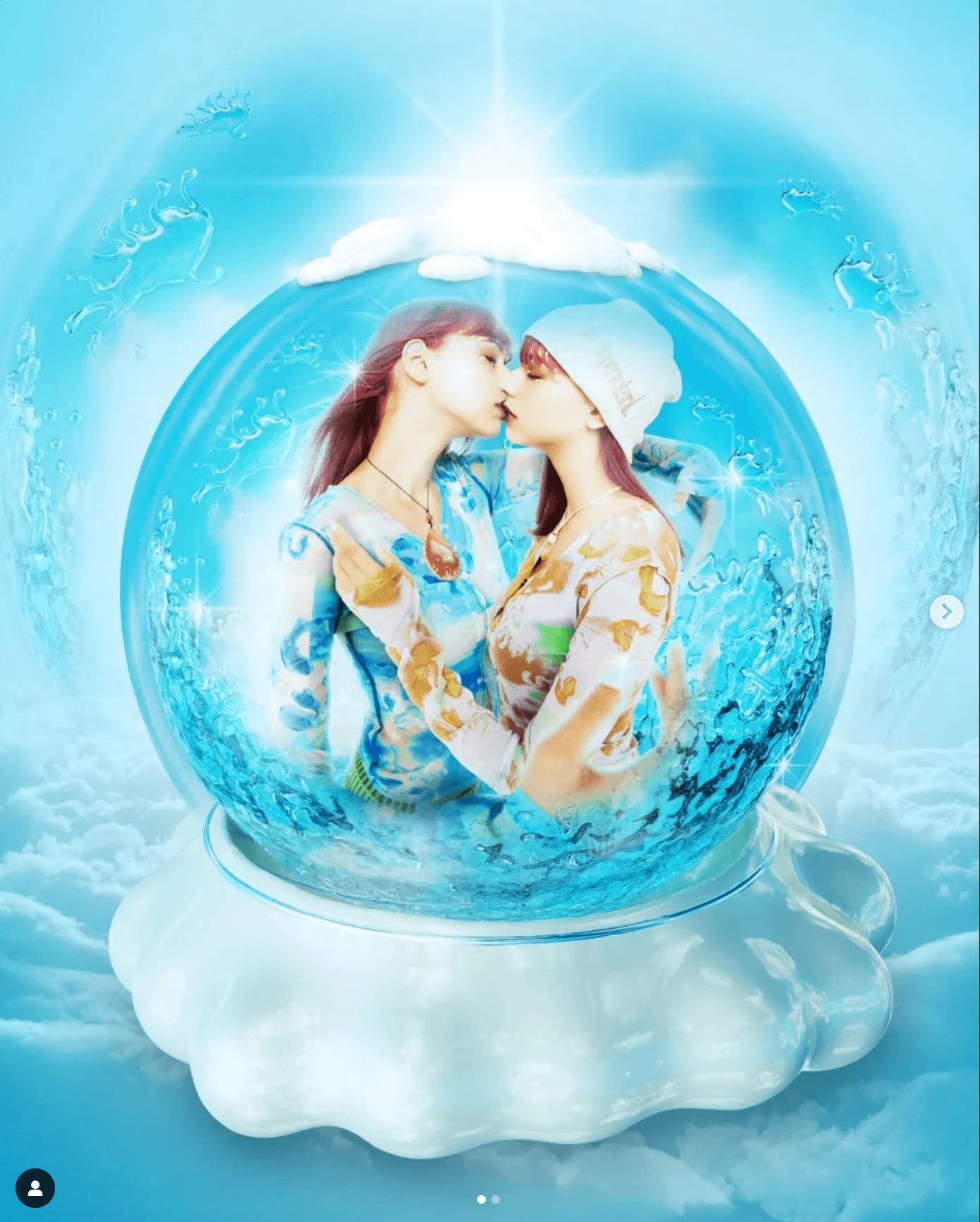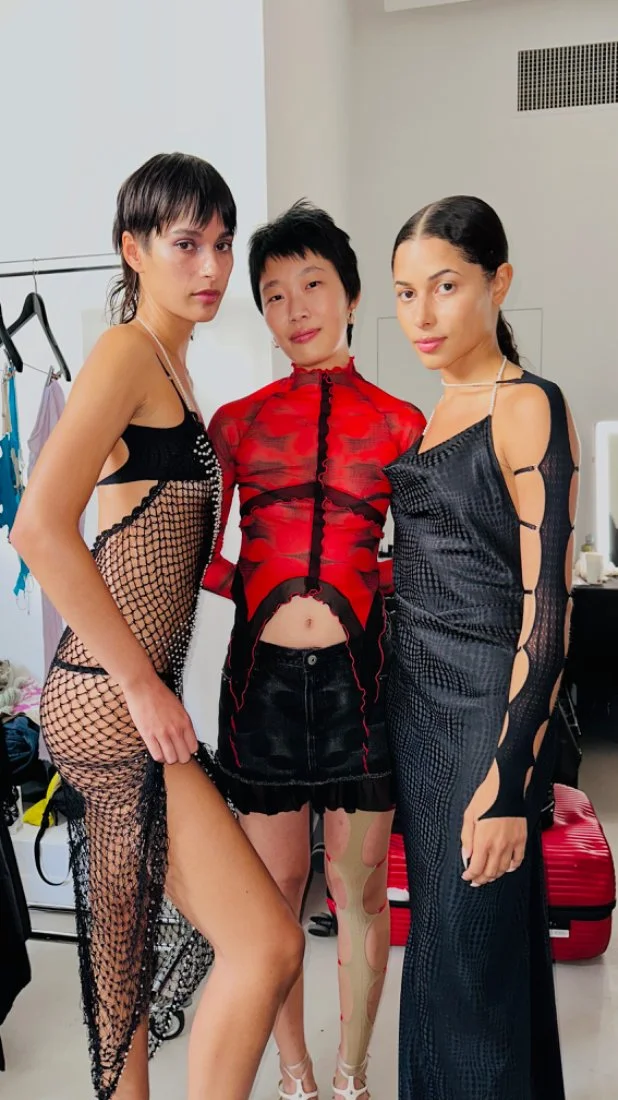Minori Murata
Worked for many fashion brands such as Laforet Harajuku, PARCO, LV, and Kenzo, as the key visual artist and art director for Imma-ten at the DIESEL ART GALLERY, Minori’s otherworldly craft is dreamscaping travel in an imaginary dimension.
Minori, I saw your website and I loved it. Your work is peculiar and is of somewhat a post-modern theme. I'd like to know about your life before you start working as a multidisciplinary. How did all this start? How was life growing up and how did the overall journey begin?
The city where I grew up was like a fusion of nature and a toy box. It’s along the riverside, located a bit away from central Tokyo, and there are three theme parks and a remarkable department store, which was my playground in my childhood. With both parents working, my summer vacations were filled with insect collecting and diving into a world beyond human reality. I often experienced otherworldly encounters, such as auditory hallucinations from daydreams and spiritual experiences etc.… You could say I was a pro at discovering fun by myself.
My mother, with a great sense of humour, pretended to be ten years younger than her actual age until I turned sixteen. She would make outrageous jokes like, "Homeless people are truly free souls," and watch Hitchcock movies grinningly. Even at a young age, she taught me that psycho-horror could be comedic.
My father was a photographer and ran the business with my mother. They were handling advertising and fashion shoots during their younger days, so our family had a close connection with art.
However, my parents didn’t strongly push me into the path of art.
I was not even aware my parents worked in the advertising and fashion industry until I graduated from university.
During high school, under the encouragement of my art teacher, I attended a preparatory school for the art university. I encountered the catalogue at Comme des Garcons, near the preparatory school. The catalogue was free for customers but tailored like an art book and was just outstanding. This experience inspired me to have a desire to express myself in the fashion industry.
My major was textile design at university, and one day, I had a chance to direct photographs for my presentation. It marked the beginning of my journey into visual expression. After graduating, I embarked on freelancing, initially focusing on direction. Through self-learning, I acquired essential skills, and my style evolved to encompass graphic design, videography, and 3D processing, all managed by myself. It helps me to directly manifest the world I envision.
Your art direction gives me nostalgia, for the specific period when the internet was raw. What going on behind you with such specific conceptualisation and creative direction?
From early childhood, I was familiar with the world beyond the screen, including video games and drawing on computers. I was particularly fond of the educational programmes on NHK, a public broadcasting company in Japan. NHK’s programmes, created freely using various methods like clay animation, puppets, and CGI, often featured unsettling scenes and inexplicable elements, leaving a profound impact on me.
I was also a member of the NHK Tokyo Children's Choir, so I observed the world inside the television was all made by humans with my child’s eyes. Moreover, the vibrant and immersive use of colours in my works, along with compositions that lack ventilated space and the three-dimensionality that looks flat, is also influenced by manga and anime.
You have collaborated with many brands and your work has been exhibited in various galleries. What is your intention with such work? Why do you do that you do What is the motivation behind your efforts?
In my childhood, department stores and malls were my playgrounds. My preparatory school was also located in Harajuku, and the fashion advertisements were incredibly familiar. The canvas or galleries facing a building in the city for me.
The large seasonal advertisements, which underwent significant changes, captivated my interest as they dynamically transformed the city's landscape. Motivated by the thought of "I'd love to showcase my work there," I believe this led me to engage in some projects and collaborations with brands over time.
I have communicated with other people through my creative work since I was a child, so it’s natural behaviour for me, but if I have to say…. I want to continue my creative journey through the dialogue with my friends and myself as lifetime memories until the day I die. Such as the optimistic idea is the motivation for my creativity.
Minori please take us through the details of your regular working day. What all goes into keeping self-aligned in your world of art and experimentation? How does your studio look or feel ltc?
I don’t have specific rules regarding the working day. Most days, I wake up in the morning, have a cup of tea and then sit at my desk and draw something. I'm a long sleeper, and I love to dream while sleeping. I also love travelling and chatting with friends just as much. I've recently moved to London just two months ago, so my room is still pretty bare. I used to live near a valley in Tokyo, and even now, I've chosen a place in London that's a bit away from the bustling centre, allowing me to be surrounded by nature. I have a fondness for living close to riversides and hills. In my studio, I envision having my favourite books and clothes, land letters penned by friends, and having a cat around would be the icing on the cake.
What is the importance of staying absurd and creating visually exciting and quirky works? What is it that you want to provide to the market and the creative industry?
Unfortunately, it is not my intention to follow a stimulating and quirky style, and this is inevitably what happens when I make them. It comes from my upbringing and roots. However, I aspire to discover and depict the phenomenal aspects inherent in transcendent expressions, like how poisons and medicines emerge from the natural world. It's like waking up with a disjointed dream that you can't tell anyone about the next day, but it's intensely vivid and intriguing —a kind of experience that makes you want to quietly leave it in a note on your iPhone.
Your work is very much a reflection of the post-truth era that we are currently living in. What do you have to say about that?
I believe that for humans, information is not based so much on whether it is "true" or not but rather on whether they "want to believe it" or not. I feel like this has been the case since my childhood.
Back in the day, there was an occult-themed programme on TV called USO (the programme's title sounds like UFO). I shuddered at the horror of the images of blinking dog eyes printed on an uncle's T-shirt and pictures of people with tails growing out of their hips that were broadcast.
As I lay in bed asleep, the eerie face of the dog and the tail growing out of the crack of his buttocks kept appearing behind my eyelids.
Looking back now, it's somewhat amusing, but the title of the show, "USO", when pronounced in Japanese using the Roman alphabet, actually means "lie”. The final episode revealed that all the lies were uncovered, but unfortunately, I missed watching the last episode! As a result, I ended up believing those stories for years…
Just like the internet, television allowed me to peer into other worlds through a screen, and I had to determine for myself whether it was true or not.
This experience makes me believe that human beings believe in the reality that they want to believe, and they accept the truth as their reality before social media or algorithms appear.
I wonder what the difference is between it and the creativity that human beings want to make in reality.
I believe it's natural for individuals to hold such subjective impressions, and I'm not at all afraid of this fact.
Perhaps these underlying thoughts are what manifest in my works.
Tell us about the art of storytelling. What all it takes to create the work that you do, in other words, the creative process? Who and what would you give the credit to your such appreciation and success?
To stimulate inspiration, what is necessary is the belief within me that "a life without intellectual curiosity is dull" and the dialogues with the people I encounter as a result of this belief.
For the past seven years since graduating from university, I have worked as a freelancer, producing output for various mediums such as fashion, sustainability, music videos, NFTs, and LGBTQ topics. Every time I engage with different individuals, take in their input and naturally channel it through my perspective to create artwork. My interest extends not only to artists and those involved in the creative field but also to people from diverse backgrounds. Regardless of gender, race, age, or occupation, I am genuinely curious about how others think and live. I am grateful to everyone who has been part of my creative journey.
Anything fun and exciting you currently working on?
Since coming to London, I've found that I can naturally paint more easily than before. Right now, I'm thoroughly enjoying creating art featuring ants. I'm using digital tools for my work, but I aim to produce something that retains a touch of analogue texture. It's reminiscent of when I used to draw on Kidpix with the iMac G3 during my childhood. It's a classic form of drawing for me.
What are you looking forward to doing next?
I'm excited for next year as I have plans for my first solo exhibition in Tokyo and collaborations with overseas media. Through my creative endeavours, I hope to make many friends in Europe!
interview JAGRATI MAHAVER
What to read next











